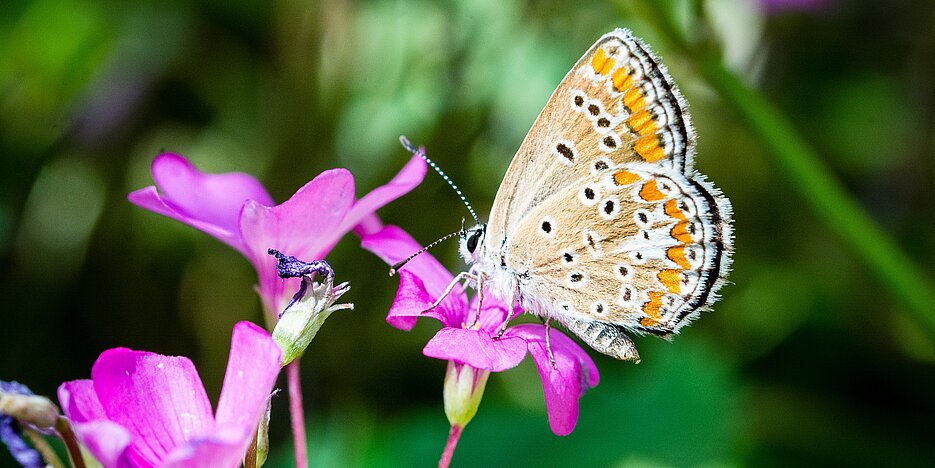Dependency on Ants Is Not Yet a Risk Factor for Central European Lycaenid Butterflies
Given the increasing influence of human activities, generalist species—those with a broader diet and lifestyle—are usually more resilient than specialized species. An example of such specialization is found in some butterflies from the family Lycaenidae, whose larvae require the care of certain ant species in the form of protection and food provision to survive. This type of dependency on ants is called myrmecophily and can occur to varying degrees. This dependency could pose an additional threat to butterfly species heavily reliant on ants, particularly under the various pressures of global change.
Surprisingly, researchers from the Julius Maximilian University of Würzburg (JMU) in Bavaria, Germany, have now discovered that ant-dependent Lycaenidae species have not shown a greater decline than ant-independent ones over the last 40 years. In fact, five out of seven of these “obligate myrmecophilous” species even increased, while five out of eight ant-independent species declined. The Lycaenidae with only occasional ant dependency showed inconsistent trends, but the differences were not statistically significant. The study’s findings were recently published in the journal Insect Conservation and Diversity.
Although strictly myrmecophilous Lycaenidae are more frequently subject to stringent conservation measures, this did not appear to influence their long-term development. One reason for the relative stability of these species could be their ability to collaborate with different ant species—especially widespread genera like Myrmica, Formica, and Lasius. The ants protect the larvae from external threats, potentially mitigating the effects of changing conditions in the short term.
However, our understanding of the diverse interactions between butterflies and ants, and the varying degrees of dependency, is still incomplete. This knowledge could be key to developing targeted conservation measures for endangered species. The study serves as an example of how fieldwork experiences and computer modeling can be combined to enhance individual disciplines and lead to new insights. Additionally, it shows that even non-significant results can provide valuable insights worthy of publication. Further fieldwork and model-based analyses derived from these findings are necessary to protect species in the future. Given the rapidly changing environment, it is essential to continuously observe interactions to better understand risk factors and stabilizing influences and to prevent the linked extinction of species.
Original Publication:
Eva Katharina Engelhardt, Diana E. Bowler, Matthias Dolek, Melvin Kenneth Opolka, Christian Hof: Myrmecophily is not a risk factor for long-term occupancy trends of central European Lycaenidae butterflies. In: Insect Conservation and Diversity, 16.10.2024. DOI: https://doi.org/10.1111/icad.12782
Contact: Dr. Eva Katharina Engelhardt, Chair of Global Ecology, Email: eva-katharina.engelhardt@uni-wuerzburg.de








